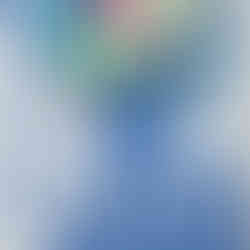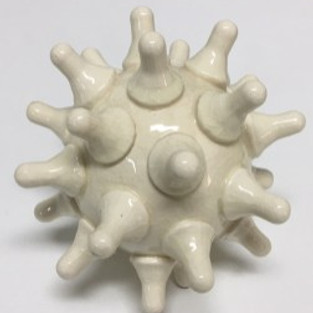The Sewing Circle: Feminine Narratives at the Marlborough School
- artandcakela
- Sep 17, 2018
- 6 min read

Phung Huynh. The Sewing Circle: Feminine Narratives. Marlborough School Seaver Gallery. Photos Courtesy of the Artists
The Sewing Circle: Feminine Narratives
Marlborough School, Seaver Gallery
Curated by Siobhan McClure
On view through September 29th
Public reception: September 22nd 5-8pm
By Nancy Kay Turner
The Sewing Circle: Feminine Narratives, curated by Siobhan McClure at Marlborough’s High School’s Seaver Gallery, brings together ten artists of diverse ages who are at different stages of their careers. The Sewing Circle is a metaphor for a safe domestic space where women have traditionally gathered to knit, quilt and crochet while sharing intimacies as only women can. Siobhan McClure, in her eloquent curatorial statement, says “Here the personal and the political merge in female-centric narratives. Overlapping threads are the body as a vehicle of desire, subjugation, power; identity as a construct to be questioned, shed, swapped; and childhood as a battlefield bathed in beauty yet drenched in destruction…”
McClure’s own body of work, “The Salt Marsh Chronicles,“ has this dystopian and apocalyptic narrative at its core. In the delicately hued work entitled ”Vision of Other Days” (2016, w.c. gouache, graphite on paper, 29.5” x 22.5”), depicts this mythic or nightmarish landscape: a boy with his puppet, a stranded dog, an abandoned car are all marooned in a detritus choked marsh. Behind them stand the ruins of a once grand bridge, now separated like the children from land. Paradoxically, neither boy nor dog appears afraid. At most, they seem inconvenienced or confused. This theme of children alone, in gorgeously hued watery landscapes with decaying or abandoned architectural structures, is evident in the large – scale painting entitled “Exodus” (2017, oil on canvas/panel, 36” x 72”). These seemingly privileged children have nowhere to go as they halt at the edge of the steps, looking on rather stoically at the cluttered shoreline. They seem resigned to their fate – almost frozen in time and space. These are beautiful but disturbing prophetic visions of the very near future and, in some places, the present.
Like the grand sweep of McClure’s paintings, Laura Krifka’s 8-minute stop action animation, entitled “Sow The Wind,” features pioneer children (albeit paper puppets on strings) in a perilous environment filled with angry adults, wild beasts and death and destruction—all the while to the sound of a sweet upbeat nineteenth century waltz. The ironic use of music to contradict the visual image is reminiscent of the scene in Dr. Strangelove where Kong rides the atomic bomb down to the strains of “When Johnny Comes Marching Home.” Or Vera Lynn as she sweetly sings “We’ll Meet Again,” as chilling footage of atomic bomb test explosions decimate nature and architecture in living color. The title “Sow The Wind” is from the Old Testament and alludes to sin, ruin, judgment and consequences. This compelling and quixotic animated film contrasts the violent nature of children’s cartoons with the saccharine image of childhood as an innocent time and owes a debt to Ralph Bakshi and “Heavy Traffic,” one of the first X-rated animated cartoons.

Laura Krifka. The Sewing Circle: Feminine Narratives. Marlborough School Seaver Gallery. Photos Courtesy of the Artists
“A Girl and A Boy” (2018, mixed media 41.5 “ x 11” x 9“ (girl), 50” x 9” x 7” (boy), is a charismatic sculpture by Andrea Patrie that amplifies this dystopian view. Constructed rather casually of tape, plastic, scrap fabric and Styrofoam and wires, these figures with their ragged clothes or broken parts evoke poverty, homelessness or even the ravages of the first Atomic Bomb dropped on Hiroshima.
Kelly McLane’s large- scale (72’ x 42”) acrylic, watercolor, and graphite drawing, done in 2017, entitled “Kids,” at first seems downright bucolic after these other apocalyptic works. In a fresh abstract gestural style, with hints of finely painted birds, deer, and landscape elements, two long -haired girls emerge. One girl, a frenzied blur of contour lines, is pulling the hair of the other. Hints of text, often illegible, form a palimpsest under the surface, like thoughts racing by. This is a recognizable image of presumed sibling rivalry, which though common, can be very destructive and unnerving.
While McClure, Krifka, McLane, and Patrie all ruminate on the role of children in society. Phung Huynh is more concerned with the damage that is wrought in the name of beauty. In her haunting “Pretty Hurts” (2018, oil paint and enamel on wooden desk drawer” 19.5” x 25.5“), Huynh presents an angelic, androgynous figure sitting at a school desk, with a calligraphy brush in hand, while a little “birdie” and a banner proclaim “Pretty Hurts.” It is painted in the manner of Southeast Asian miniatures, replete with a gold leaf nimbus around the child’s head. Situating the painting in a vintage school drawer insinuates that these false notions about beauty are drilled into children at a very young age.
Cultural norms of beauty also play into her work. In “Blue” (2016, oil paint and collage on canvas, 20” x 20”), a young Asian woman is changing the color of her brown eyes by putting in a blue contact lens, perhaps to adhere to a Caucasian “ideal” of beauty. Huynh continues the theme of pretty hurts with “Nose Sharpener” (2016, oil paint and collage on canvas, 20” x 20”). Here a nubile, young nude female sits cross-legged while using the “nose sharpener” on her own nose, presumably to change its shape. Her left foot is horribly misshapen as a result of Chinese foot binding referencing those women whose feet were bound and who were forever crippled as a result. It reminds one of the ugly stepsisters in the original Grimm’s tale, who cut off their toes to fit into the glass slipper. Huynh incorporates hints of landscape –something like a Bonsai miniature tree, which is also pruned and clipped until it achieves an unnatural but beautiful shape. Her work is a cautionary tale of woe and sadness.

Stephanie Mercado. The Sewing Circle: Feminine Narratives. Marlborough School Seaver Gallery. Photos Courtesy of the Artists
Stephanie Mercado’s “Responsibility is Really Heavy” 2018, handprinted, hand cut relief prints, collage on handmade paper, is a highly detailed, humorous representation of an apron–clad woman, bent over with the burden of carrying all sorts of domestic objects balancing precariously on her back. All of these objects –T.V.’s, beds, children, baskets, stools, instruments point toward onerous domestic chores. This is a visually arresting work, with cutout lines etched in black ink, forming a rhythmic pattern on the surface of the subtly textured handmade paper. A more metaphorical, less literal title would have served this excellent piece better.
Lavialle Campbell, with her refined quilt entitled “Lovely Ash” (2014, 100% cotton, 50’ x 62”), is the only artist here who actually sews anything. Here each stitch becomes a drawn line forming quilts within the quilt like the infinity of mirrors. The interior shapes also reference the outlines of the shape of a house. Simply elegant, this work is minimal in color but has maximum impact due to the natural complexity of the stitchery and the excellent craftsmanship.
Kate Savage’s portraits of mythical characters highlight strength and courage (with a hint of vanity) and are painted loosely with a monochromatic or muted color palette. Rebecca Campbell’s three terrific loosely rendered portraits are from her “You Are Her,” series, where she paints portraits of female graduate students in her class to give them visibility as artists.
Tidawhitney Lek, in the complex and humorous landscape entitled “The P. and the B.” (2018 acrylic and oil on canvas) gives the viewer an unusual view of the city beyond the concrete foliage covered barrier in her backyard. The “P” and “B” of the title are her cat and dog who one sees from behind (and I do mean behind). Meticulously painted, with crisp hard edges, it has with every inch of the surface jam packed with imagery peeking through the negative shapes of the concrete and the foliage. Lek’s painting is a tour de force work that celebrates the beauty within and without walls. This is an engaging and thoughtful exhibit (perfect for an all girls school) where the artists all explore and examine different versions of a feminine narrative.
#losangeles #california #losangelesartist #art #painting #TidawhitneyLek #Marlborough #losangelesart #contemporaryart #MarlboroughSchool #southerncalifornia #abstract #collage #LauraKrifka #feminist #photography #artgallery #gallery #museum #KellyMcLane #artandcake #artopening #artexhibition #installation #SeaverGallery #ArtandCakeLA #fineart #StephanieMercado #artists #artist #mixedmedia #arts #environment #artreview #sculpture #artmagazine #RebeccaCampbell #katesavage #ArtandCulture #exhibition #exhibit #SiobhanMcClure #dtla #PhungHuynh #AndreaPatrie #drawing #LavialleCampbell






















































